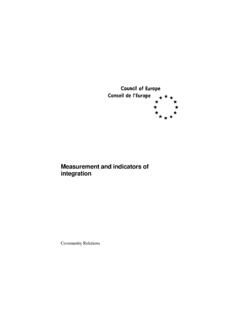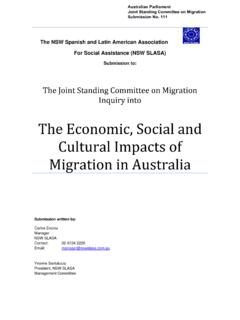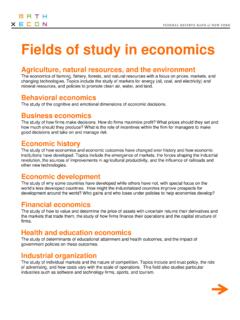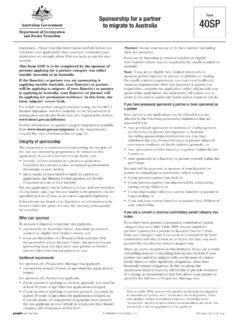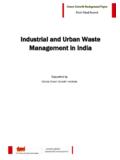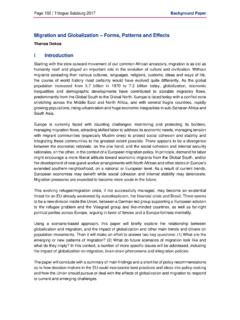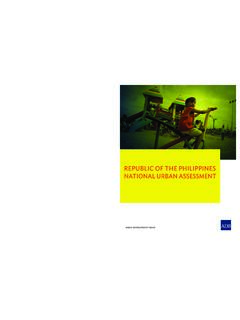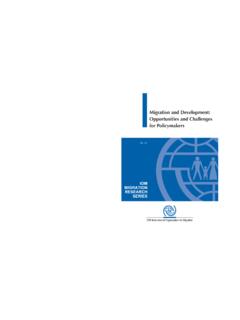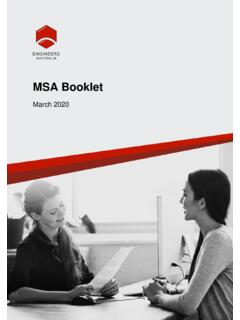Transcription of A guide to international refugee protection and building ...
1 A guide to international refugee protection and building state asylum systems Handbook for Parliamentarians N 27, 2017. Acknowledgements This publication is jointly published by the Inter-Parliamentary Union and the United Nations High Commissioner for Refugees. Authors: Frances Nicholson and Judith Kumin. Joint inter-agency editorial committee: Cornelis Wouters, Ariel Riva, Alice Edwards, Madeline Garlick (UNHCR Division of international protection ); members of the IPU Committee to Promote Respect for international Humanitarian Law, in particular Senator Gabriela Cuevas Barron (Mexico), Senator Philippe Mahoux (Belgium) and Kareen Jabre, Secretary of the Committee. Other commentators and contributors: Sanne Andersen, Caroline Dulin Brass, Subin Cho, Carole Simone Dahan, Alice Farmer, Sibylle Kapferer, Jackie Keegan, Nese Kilincoglu, Alexandra Pamela McDowall, Michele Simone, Peter Swiniarski, Beatrice Ureche, numerous other staff in UNHCR.
2 Headquarters in Geneva and national offices around the world. The IPU expresses its gratitude to the Federated States of Micronesia for its financial contribution towards the production of this Handbook. All parts of this publication may be reproduced for personal and non-commercial use on condition that copyright and source indications are also copied and no modifications are made. Please inform the Inter-Parliamentary Union on the usage of the publication content. Inter-Parliamentary Union and the United Nations High Commissioner for Refugees, 2017. Cover photo: UNHCR/Benjamin Loyseau Design and layout: BakOS DESIGN. ISBN 978-92-9142-707-9 refugee Handbook (GB). Contents 10. Using this Chapter 1: The international legal framework protecting international refugee law and Regional refugee laws and Other international legal standards that protect asylum-seekers and Other sources of law and Chapter 2 : Roles and responsibilities for protecting The roles and responsibilities of Responsibilities towards particular categories of The role of UNHCR's Supporting and funding refugee protection and UNHCR's Chapter 3: Acceding to international instruments protecting refugees and building State asylum Acceding to the 1951 Convention and/or 1967 Developing State asylum national laws and policies: The core of State asylum Chapter 4.
3 Managing the border and regulating the entry of Admission to territory and the scope of the non refoulement Ensuring security and protecting Challenges of mixed population 3. Smuggling, trafficking and refugee protection -sensitive entry systems in mixed migration Non-penalization for irregular Chapter 5: Receiving asylum-seekers and Reception and treatment of asylum-seekers in the context of individual asylum Freedom of movement, detention and alternatives to 104. Responding to a mass 115. Responding in 118. Chapter 6: Determining who needs international State responsibility for refugee status Determining refugee The refugee definition: Who is included?..132. What about the situation of Palestinian refugees?..144. Who should be excluded from refugee status?..144. Complementary and temporary forms of international Chapter 7: Making asylum procedures fair and Fair and efficient asylum Minimum procedural Ensuring confidentiality in line with relevant data protection principles and Registering and adjudicating Admissibility The interview and decision-making process at first 171.
4 Accelerated 175. Subsequent application and abandonment or withdrawal of 177. Appeals and effective 179. Asylum-seekers with specific needs in the asylum Recognition of refugee Cancellation, revocation and cessation of refugee Persons found not to be in need of international 4. Chapter 8: Respecting the rights and dignity of The principle of non 201. The obligations and rights of 201. The rights of persons with complementary forms of Combatting racism, discrimination and 217. Using UN human rights mechanisms for asylum-seekers and Chapter 9: Securing durable Laying the groundwork for solutions: A systems Voluntary Local integration: Settling in the host Innovative approaches to resettlement and other migration Comprehensive approaches to resolve protracted refugee Annex 1: Model instrument of accession to the Convention relating to the Status of Refugees of Annex 2: Model instrument of accession to the Protocol relating to the Status of Refugees of Annex 3: Model instrument of succession to the Convention relating to the Status of Refugees of Annex 4: Model instrument of succession to the Protocol relating to the Status of Refugees of Annex 5: Glossary of key refugee protection -related Annex 6.
5 Selected websites with information on aspects of refugee A few words 5. Foreword IPU. Providing protection to people fleeing in search of refuge is one of humanity's most long- standing traditions a shared value embedded in many religious and cultural traditions, and now part of international law. It is a value that has stood the test of time, and was most recently articulated by all 193 United Nations member states in the New York Declaration on Refugees and Migrants, adopted in September 2016. The Declaration was a resounding reaffirmation of the fundamental principle of refugee protection , at a moment when the number of people fleeing their homes has reached levels not seen in decades. There are now almost 66 million people displaced from their homes by conflict, violence and persecution, of whom around one third have fled across borders as refugees a similar level to the mid-1990s, when the aftermath of the Cold War triggered similar upheaval.
6 The magnitude and complexity of forced displacement today is directly linked to the prevalence, scale and longevity of today's conflicts, and the inability of the international community to find the unity of purpose necessary to resolve them. 6. More than 80% of those fleeing their countries as refugees find protection in neighbouring ones, whose people and governments are often struggling to manage the impact of a nearby conflict and to address their own development challenges. Over half of all refugees are children compared to around one third of the world's general population. Fewer than one in five refugees move further afield; when they do so, it is often due to a lack of prospects, and inadequate support, including for the countries and communities hosting them. Those who move generally do so part of irregular migratory flows, encompassing people moving for a broad range of reasons including economic opportunity.
7 It is important to maintain a clear distinction between refugees and migrants, with refugees holding a particular status in international law as they are unable to return home because of conflict and persecution albeit that both groups encounter many of the same risks, often perishing or exposed to physical harm on risky overland and sea voyages. The New York Declaration also came at a moment in which the principle of refugee protection had been tested by the actions of some states and indeed, this continues to be the case. In certain countries and regions, access to asylum is restricted, with borders closing, detention on the increase and legal and procedural impediments blocking access to protection . Confronted by seemingly intractable conflicts, by heightened security concerns, and in difficult economic times, some governments have responded by closing their doors, pursuing arrangements that outsource' refugee protection elsewhere, and allowing the rhetoric of xenophobia and nationalism to go unchecked.
8 Yet, at the same time there have also been many positive examples of moral courage and leadership, of governments stepping up and keeping their borders open as thousands flee, and countless acts of solidarity from individuals and communities all over the world. The New York Declaration emphasises that protecting refugees requires the engagement of all parts of society. Parliamentarians have a crucial role to play in this respect ensuring the continued effectiveness of the international refugee protection regime and establishing and maintaining State asylum systems that uphold protection principles and are able to respond effectively to contemporary challenges. This Handbook has two aims: to inform parliamentarians about the founding principles and obligations of international refugee law, and to mobilize their support for establishing and maintaining fair and effective national asylum systems, in line with international standards.
9 These are essential for governments to be able to identify people in need of international protection , and to ensure that people who have been forced to flee persecution and conflict can continue to seek and enjoy asylum, in line with the 1951 refugee Convention and its 1967 Protocol. We commend it to you as an important resource, and trust that it will play a role in translating the promise of the New York Declaration into action. Filippo Grandi Martin Chungong United Nations Secretary General, High Commissioner for Refugees Inter-Parliamentary Union 7. Abbreviations AIDS Acquired immunodeficiency FGM Female genital mutilation syndrome HIV Human immunodeficiency virus BID Best interest determination HRC UN Human Rights Committee CAR Central African Republic IARLJ international Association of CAT Convention Against Torture refugee Law Judges and Other Cruel.
10 Inhuman or Degrading Treatment ICAO international Civil Aviation Organization CEDAW Convention on the Elimination of All Forms of Discrimination ICC international Criminal Court against Women ICCPR international Covenant on Civil COI Country of origin information and Political Rights CRC Convention on the Rights of the ICERD international Convention on Child the Elimination of All Forms of Racial Discrimination CRPD Convention on the Rights of Persons with Disabilities ICESCR international Covenant on Economic, Social and Cultural CTD Convention travel document Rights DRC Democratic Republic of Congo ICRC international Committee of the Red Cross EASO European Asylum Support Office IDP Internally displaced person ECOSOC Economic and Social IFRC international Federation of Committee of the United Red Cross and Red Crescent Nations Societies EU European Union IMO international Maritime Organization ExCom Executive Committee of the High Commissioner's IOM international Organization for Programme Migration FAO Food and Agriculture Agency IPU Inter-Parliamentary Union 8.










